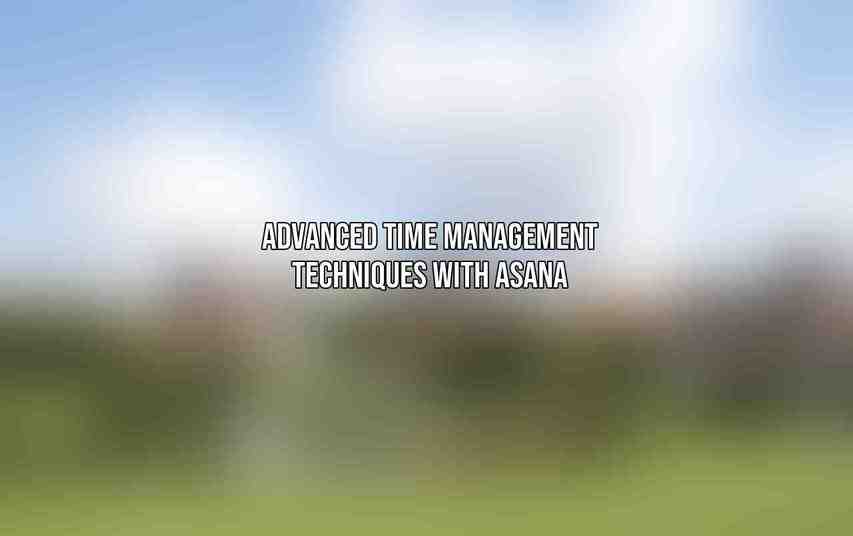Asana is a powerful project management tool designed to help individuals and teams stay organized and productive. It serves as a centralized platform for task management, goal tracking, team collaboration, and project visualization. With Asana, users can streamline their workflow, prioritize tasks, and ensure efficient project completion. Find more on Asana Compared: Finding the Best Project Management Tool for Remote Work
A. What is Asana?
Asana is a web and mobile application that allows users to create tasks, assign responsibilities, set deadlines, and track progress towards their goals. It offers a user-friendly interface with multiple views such as list, board, calendar, and timeline to cater to different work preferences. Asana’s main goal is to simplify task management and improve productivity for individuals and teams alike.
B. Key Features and Benefits

Some of the key features of Asana include task creation, due dates, assignees, comments, attachments, custom fields, tags, dependencies, and integrations with other tools like Google Drive, Slack, and Microsoft Teams. The platform offers numerous benefits such as increased efficiency, better communication, improved organization, and enhanced collaboration among team members. Read more about this on Boost Your Personal Productivity with These Asana Hacks
Time Management Techniques Using Asana
Asana can be a game-changer when it comes to time management. By leveraging its features effectively, individuals can boost their productivity and make the most out of their day.
A. Goal-Setting:
- Establishing Clear, Achievable Objectives:Setting SMART goals (Specific, Measurable, Achievable, Relevant, Time-bound) is crucial for effective time management. Asana’s goal-setting feature helps users define clear objectives and track their progress towards achieving them.
- Using Asana My Tasks and Projects:The My Tasks section in Asana allows users to view all their assigned tasks in one place, making it easier to prioritize and manage their workload. Projects in Asana enable users to organize related tasks and collaborate with team members efficiently.
B. Task Organization:
- Creating Tasks and Subtasks:Breaking down tasks into subtasks helps in better task management and tracking progress. Asana enables users to create subtasks within a task, ensuring a more granular approach to task completion.
- Using Custom Fields and Due Dates:Custom fields in Asana can be utilized to add specific details or categories to tasks, making it easier to filter and sort tasks based on different criteria. Setting due dates for tasks helps in prioritizing and scheduling work effectively.
- Prioritizing Tasks with Urgency and Importance:Asana allows users to prioritize tasks based on their urgency and importance using features like priority markers, due dates, and custom tags. This helps individuals focus on the most critical tasks first.
C. Time Blocking:
- Allocating Specific Time Slots for Tasks:Time blocking involves assigning specific time slots to tasks or activities, ensuring dedicated focus and completion within the allocated timeframe. Asana’s calendar view and timeline feature assist users in scheduling and managing their time effectively.
- Using Asana Timeline and Calendar Views:The timeline view in Asana provides a visual representation of project tasks and their timelines, enabling users to plan and adjust schedules accordingly. The calendar view helps in organizing tasks based on due dates and priorities.
D. Pomodoro Technique:
- Breaking Down Work into Intervals:The Pomodoro Technique involves breaking work into focused intervals followed by short breaks to enhance productivity and focus. Asana’s timer feature and task conversations can be used to implement this technique and maintain concentration during work sessions.
- Using Asana Timers and Task Conversations:By setting timers for tasks in Asana, users can work in focused intervals and track their work sessions effectively. Task conversations facilitate collaboration and communication among team members during task execution.
E. Eisenhower Matrix:
- Categorizing Tasks Based on Urgency and Importance:The Eisenhower Matrix helps individuals prioritize tasks based on their urgency and importance, placing them into four categories: urgent and important, important but not urgent, urgent but not important, and neither urgent nor important. Asana’s tags and custom fields can be used to categorize tasks accordingly.
- Using Asana Tags and Custom Fields:Leveraging tags and custom fields in Asana allows users to classify tasks based on specific criteria, making it easier to identify and tackle tasks based on their priority and significance.
F. Kanban Board:
- Visualizing Task Workflow:The Kanban board is a visual tool that represents tasks in different stages of completion, providing a clear overview of the workflow. Asana’s custom statuses and workflows feature enable users to customize their boards and track task progress seamlessly.
- Using Asana Custom Statuses and Workflows:Asana’s custom statuses and workflows feature allows users to define task stages, progress indicators, and workflow rules within the Kanban board, enhancing task visualization and management.
G. Automation:
- Automating Repetitive Tasks:Automation in Asana eliminates manual work by automating repetitive tasks and workflows, saving time and reducing the margin for error. With features like Asana rules and Zapier integrations, users can streamline their processes and focus on more critical tasks.
- Using Asana Rules and Zapier Integrations:Asana rules enable users to set automated actions based on task triggers or changes, optimizing task management. Zapier integrations facilitate seamless connectivity between Asana and other apps, allowing for data sync and task automation across platforms.
Managing Multiple Projects Simultaneously
Managing multiple projects concurrently can be challenging, but with Asana’s robust features, individuals can navigate through complex workflows with ease.
A. Creating and Managing Projects:
Creating a new project in Asana involves defining project goals, task lists, assignees, due dates, and dependencies. By segmenting projects into manageable tasks and subtasks, users can track progress effectively and ensure timely completion.
B. Assigning Tasks and Managing Team Collaboration:
Assigning tasks to team members in Asana involves specifying roles, responsibilities, and deadlines, ensuring clarity and accountability. Collaborative features such as comments, task followers, and real-time updates facilitate seamless communication and coordination among team members.
C. Using Workspaces to Organize Projects:
Workspaces in Asana serve as dedicated environments to organize projects, teams, and tasks based on different departments or client requirements. By creating separate workspaces, users can maintain clarity, confidentiality, and structured project management.
Remote Work and Time Management with Asana
Asana proves to be a valuable asset for individuals and teams looking to optimize their time management strategies and enhance productivity.
A. Virtual Task Delegation and Collaboration:
Asana’s cloud-based platform allows for easy task delegation, real-time collaboration, and remote project management. Through features like task assignments, comments, and attachments, teams can effectively collaborate irrespective of their geographical locations.
B. Using Asana Mobile App for On-the-Go Productivity:
The Asana mobile app enables users to manage tasks on the go, receive notifications, and stay updated on project progress from anywhere. With offline access and sync capabilities, users can ensure continuous productivity even when not connected to the internet.
Advanced Time Management Techniques with Asana

Taking time management to the next level with Asana involves exploring advanced features and customization options tailored to individual workstyles.
A. Time Tracking and Reporting:
Asana offers time tracking capabilities to monitor task durations and workloads, providing insights into time allocation and efficiency. Reporting features in Asana enable users to generate performance reports and analytics to optimize their time management strategies.
B. Customizing Asana for Individual Workstyles:
By utilizing Asana’s custom fields, tags, views, and integrations, users can customize the platform to align with their preferred workstyles and task management preferences. Tailoring Asana to individual needs enhances workflow efficiency and personal productivity.
C. Troubleshooting Common Time Management Issues:
Asana provides support resources, help articles, and community forums to assist users in troubleshooting common time management challenges. By leveraging these resources, individuals can address time management roadblocks effectively and optimize their Asana experience.
By mastering time management techniques and leveraging Asana’s capabilities, individuals can elevate their productivity, stay organized, and achieve their goals with efficiency. Whether it’s goal-setting, task organization, time blocking, or automation, Asana serves as a versatile tool to empower users in managing their time effectively. Embrace the power of Asana and unlock your full productivity potential today!
Frequently Asked Questions
What is Asana?
Asana is a web and mobile application designed to help teams organize, track, and manage their work projects efficiently.
How can Asana help with time management?
Asana provides a platform for creating tasks, setting deadlines, prioritizing work, and collaborating with team members, which can help individuals and teams stay organized and on track with their projects, ultimately leading to better time management and increased productivity.
Is Asana suitable for personal use?
While Asana is primarily designed for team collaboration and project management, it can also be used for personal task management, goal setting, and time tracking.
Can Asana integrate with other productivity tools?
Yes, Asana offers integrations with various productivity tools such as Google Calendar, Slack, Microsoft Teams, and more, allowing users to streamline their workflows and enhance productivity.
Is there a free version of Asana available?
Yes, Asana offers a Basic plan for individuals and small teams that includes basic task management features for free, with the option to upgrade to premium plans for additional features and capabilities. Read more on Ultimate Asana Setup Guide for Maximizing Remote Work Productivity

